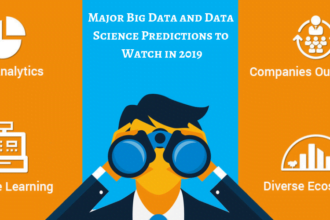We have talked a lot about some of the biggest ways that AI technology is changing the programming profession. One of the biggest benefits of AI is that it is helping developers test their programs more easily. This is one of the reasons that programmers are expected to spend over $12.6 billion on AI code test tools by 2028.
Remarkably, generative AI has had little effect on test automation. Microsoft has incorporated extraordinarily sophisticated AI into Office and Windows production versions. This is one of the many examples of how AI can be beneficial in low code environments.
Is software testing becoming so much more complex with the release of a brand-new search engine driven by generative artificial intelligence? Are the current methods of automating tests simply superior? Presumably not.
Test automation experts, in contrast to many manual software testers, have frequently disregarded AI’s promise. Many of these engineers are now concentrating on picking up Java and becoming acquainted with test frameworks, hoping to construct buttons and other features to aid the engineering team’s progress. Proficient in languages like Python or Java and skilled in using test frameworks like Selenium, Appium, or Playwright, test automation veterans take great pleasure in their abilities.
Artificial intelligence has always been somewhat of a mystery for these technologists, a kind of cryptic black box that requires years of training and significant processing power to understand fully. The assumption that test automation engineers are comfortable staying in their area of competence has typically been accepted by them. Generative AI has, however, recently upset the equilibrium in several ways.
The Future of test automation
As the ability to generate basic Java/Selenium tests with AI becomes commonplace, some fear their skills are no longer essential. They argue that the generated code needs human oversight and “meticulous curation” and question the reliability of AI output. However, this framing paints an incomplete picture.
Instead of viewing AI as a replacement, consider it a powerful partner. While AI excels at automating repetitive tasks, it still lacks the human ability to understand context, user behavior, and the overall application landscape. Complex decision points, edge cases, and a few testing scenarios will still require the expertise of human testers. In other words, there will still be a demand for experts that know how to use languages like Java to make AI.
Therefore, the future of test automation lies not in complete automation but in a collaboration between AI and human testers. Testers will leverage AI to generate basic scripts, freeing time for higher-level strategic testing activities. They can then focus on:
- Designing comprehensive testing strategies: Identifying critical user journeys, prioritizing test cases, and defining success criteria.
- Defining complex testing scenarios: AI might struggle with edge cases or intricate testing logic. Here, human testers can bridge the gap by crafting specific test cases.
- Analyzing and interpreting test results: While AI can identify issues, human testers are better equipped to understand the root cause, prioritize bugs, and ensure quality.
As AI continues to evolve, so too will the tester’s role. Their expertise will shift from writing code to providing critical judgment and strategic direction. They will become test architects, utilizing AI as a powerful tool to ensure software quality remains high. Rather than a zero-sum game, this collaborative approach will ultimately lead to a more robust and efficient testing process.
The speed and cost advantage of AI-powered test automation
There’s no denying the undeniable: AI-powered test automation boasts tremendous speed and cost efficiency compared to traditional manual methods. Studies have shown AI can generate test code significantly faster, potentially at a rate of 10x or even 100x compared to an experienced human programmer. This translates to a dramatic decrease in development time and resources.
However, it’s crucial to acknowledge the potential accuracy limitations of AI-generated code. While it might be significantly cheaper, if the generated tests are frequently flawed (even at a 1% or 10% error rate), the cost savings could be negated by the need for extensive manual validation and re-work.
Knowing the front lines: What Is test coverage?
It’s important to comprehend software test coverage before utilizing the potential of generative AI. It’s a measure used in software testing to indicate how much a program’s source code is run through the testing process.
“A high coverage lowers the likelihood of undiscovered bugs because it shows that a larger portion of the code has been evaluated.”
What makes it important?
Recognizing the sections of the code that may require more testing is made easier by knowing which parts have already been tested. It helps reduce risks, enhance software quality, and guarantee that the finished product meets expectations.
“High test coverage ensures a high-quality product by reducing the likelihood of undetected bugs in production.”
For Example, consider opening a banking app without thoroughly testing the fund transfer function. Consumers could suffer financial damages if defects go unnoticed.
- The imperfect reality of test code: It’s true that a lot of test code, manual or automated, leaves room for improvement in terms of architecture and stability. This opens the door for AI to bring a fresh perspective and even potentially improve existing test codebases.
- Resistance to change and confirmation bias: Testers, like many professionals, may be apprehensive about AI’s potential disruption of their established workflows. Some may seek to confirm their biases against AI with quick dismissal rather than fully exploring its capabilities.
- Underestimating AI’s self-improvement capability: The idea of having AI check its own generated code is fascinating. This highlights a key aspect of modern AI tools: their ability to learn and refine their output with feedback. Dismissing AI-generated code without this iterative process misses a huge opportunity.
Know your collaborator: Generative AI
It’s not just any AI that’s generative. It’s a class that can produce new data that looks like the supplied data. Using preexisting data, these models generate new comparable yet distinct data regarding patterns, structures, and attributes. Text, pictures, and videos are typical examples.
Generative AI implementation for software test coverage
- Addressing requirement gaps: Close the gaps in requirements by forecasting potential bugs and analyzing missing requirements.
- Proactive defect identification: Examine the requirements thoroughly to identify potential defects within the application proactively.
- Trend analysis: Evaluate the software’s sensibility and identify patterns to enhance overall quality.
- Defect prediction through test case review: Predict defects by reviewing test cases and addressing coverage issues.
- Enhancing automation coverage: Anticipate defects resulting from automation coverage issues by improving and expanding automation coverage.
Point of view
Software testing approaches have undergone a paradigm shift with the incorporation of Gen AI in test case generation. AI enhances and automates identifying test cases based on requirements and code analysis. This improves coverage and allows the software to evolve more quickly. We are getting closer to a time when software applications are not just creative and feature-rich but also dependable and durable in the face of constant change as development teams harness the power of Gen AI in testing. A new era in software development is emerging where testing is not just a phase but an intelligent and essential component of the entire lifecycle thanks to the cooperation of human expertise and artificial intelligence.











